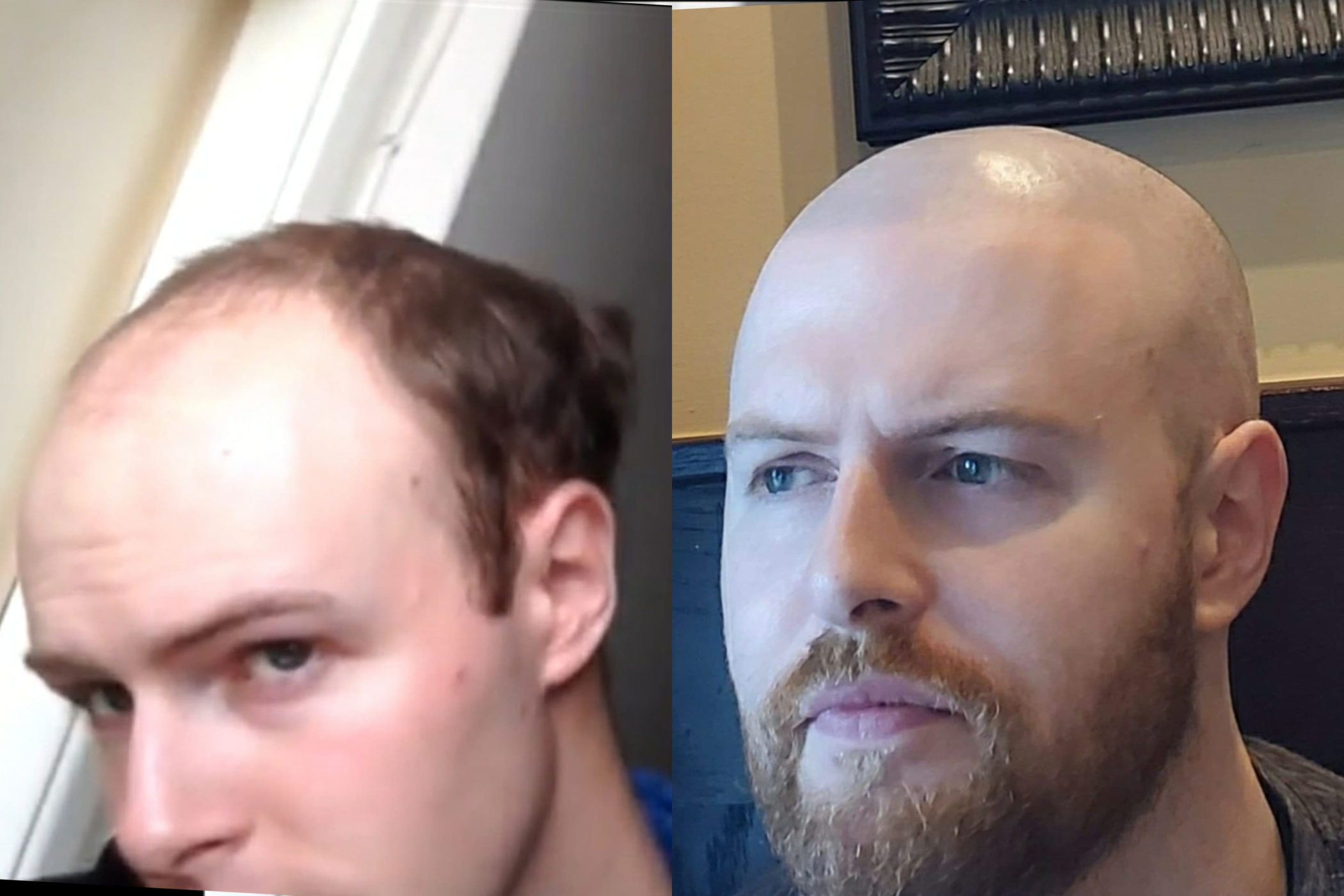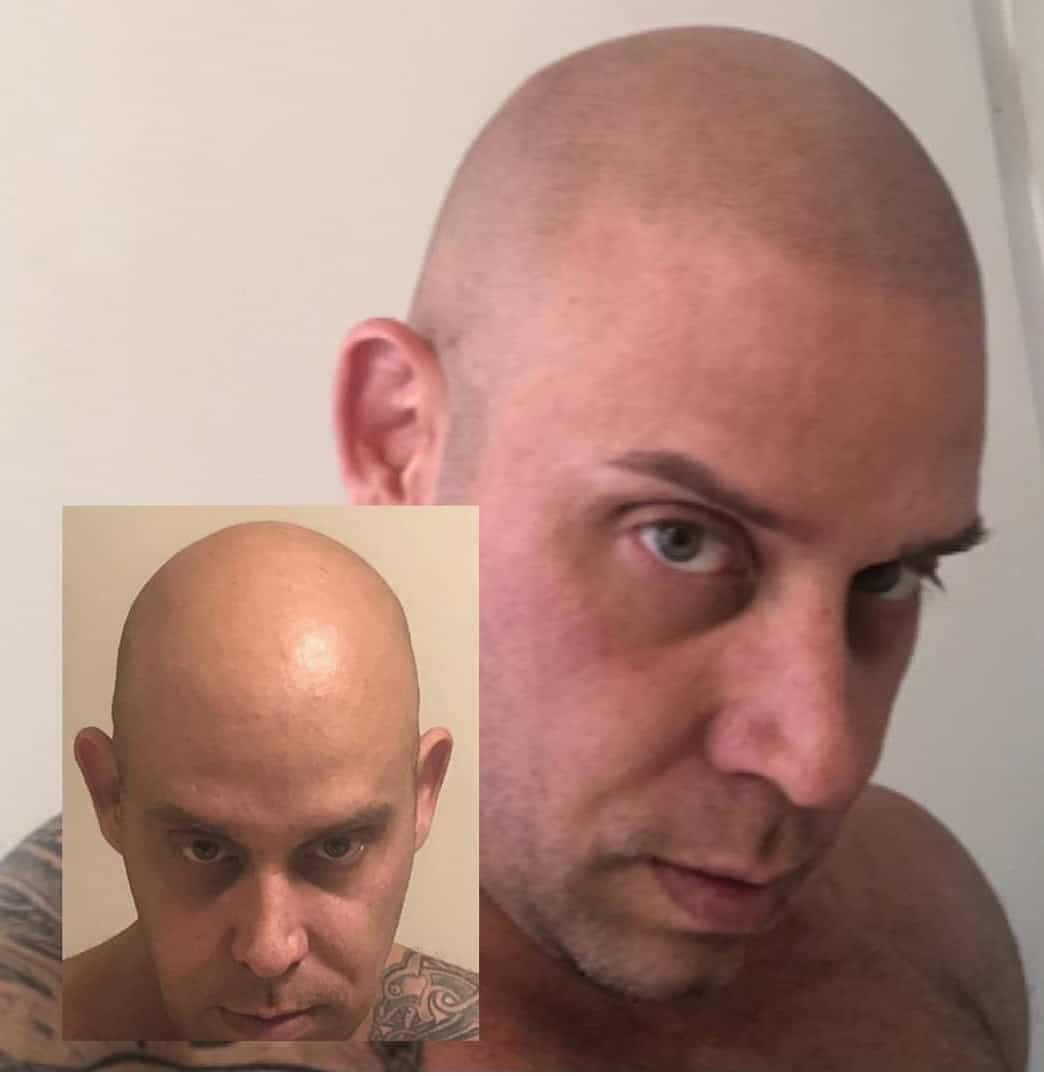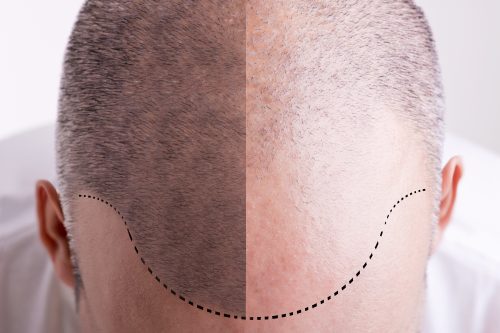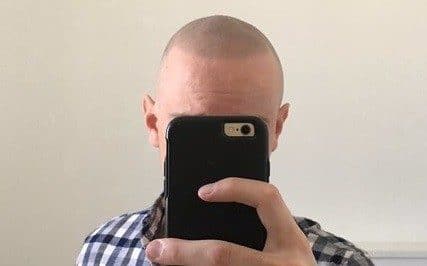
Scalp Micropigmentation on blonde, fair, and red haired people?
I had a client in for his first session this morning and he said something which brought back a little memory for me:
“The only thing stopping me from doing this is that I thought it only worked on darker guys.”
And you know, I had forgotten something: This was exactly my first concern when I was a client myself. I am almost certain that my first inquiry to HIS Hair Clinic all those years ago was: “Hey, I’m a ginger, I’m screwed, right?”
Well this is completely wrong, this treatment absolutely works well for lighter skin clients. It is a different type of treatment and those natural soft hairlines are what I do better than anything else. SMP worked for me all those years back and since then – hairline designs have improved drastically as well as the tools and experience to create these hairlines. And let’s not forget – this treatment was invented in the United Kingdom where such skin tones are much more common.
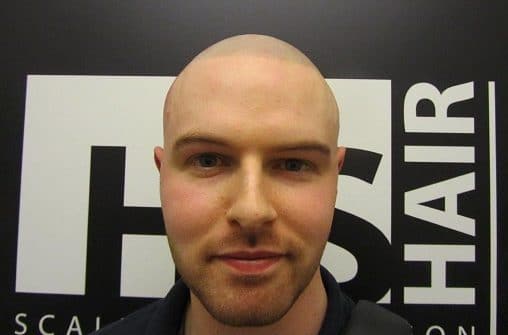
One reason for this perception is because there are more examples of darker clients having SMP. This is because SMP will always look redder + more irritated on lighter skin immediately after treatment. It needs that extra time to settle down in order to look completely natural so Technicians are going to avoid putting those photos online. This is why, if you look in my gallery and scroll to the bottom – you will be able to see a variety of selfies that clients have sent to me of their healed results: Click here to see those healed Results
But on darker skin, that redness is likely to be less prominent and will look closer to how it will be once settled.
Other things to bare in mind for my fellow gingers:
- Us redheads, blonde and fair hair clients are more likely to prefer softer and more natural treatments rather than a defined hairline. Even though a defined hairline is possible on pale skin (see below) – there still needs to be a slightly different approach taken to this compared to giving a similar hairline to a dark Hispanic or African American client.
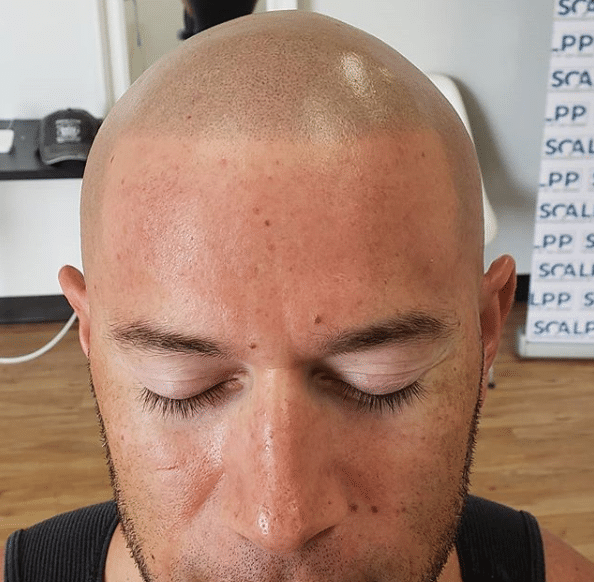
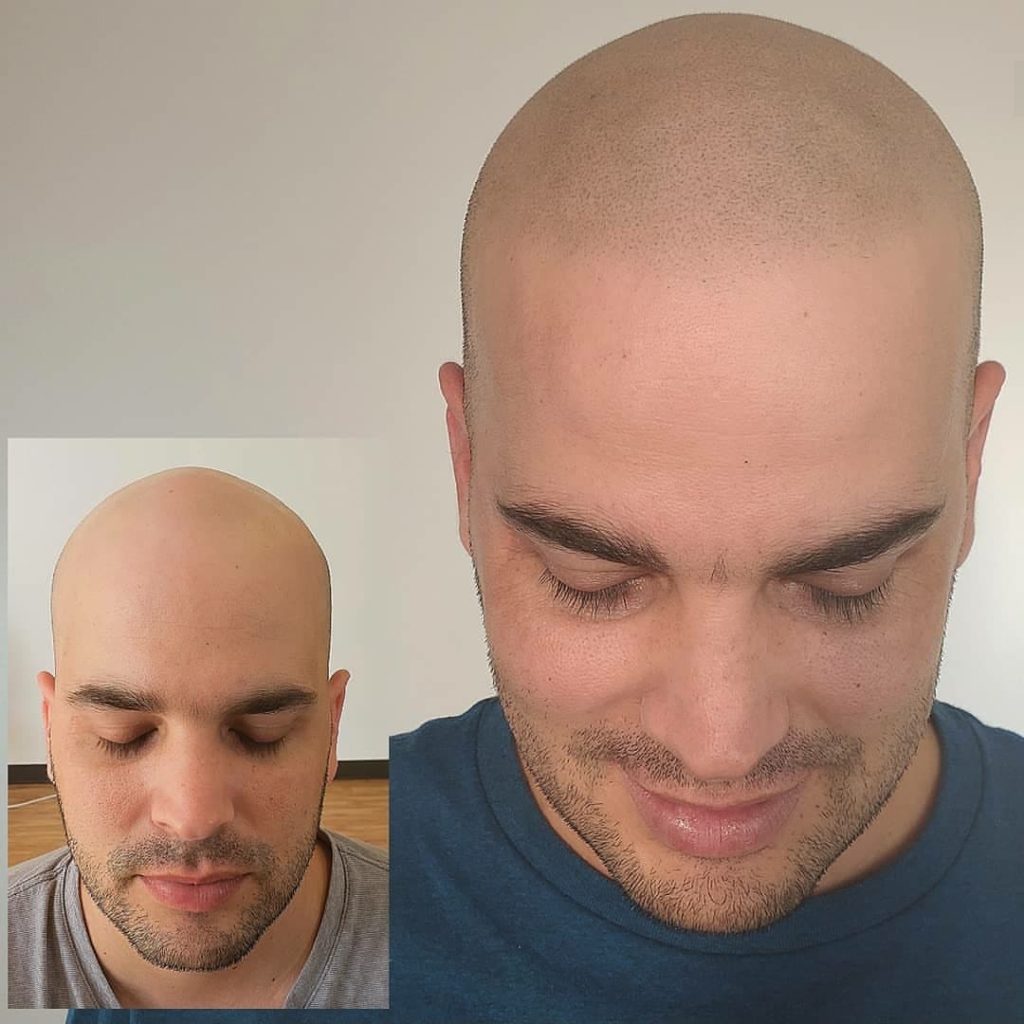
- Patience is king. You may need an extra session to be fully completed. With darker skin, we have naturally canceled out many shades of color and I know I will have to go dark to begin with in order to blend with the hair. With lighter skin, we need to start lighter and work our way down. Any slight imperfection – even one dot that is incorrect in size/density/color/shape – will stand out much much more on paler skin. There is very little room for error. Therefore, we start light, with tiny dots and an open density – and then I have our platform to work with. We can then add to this – gradually building the darkness and density until it looks 100% perfect. This way, I am always in control of the treatment. Then my client can go away once healed and we can both judge if further work is required.
- Thinner skin and hair follicle size. On average, white client’s skin is a little thinner and/or tighter and therefore needs lighter pressure and smaller dots. The average hair follicle on a caucasian scalp is usually between 60-100μm (Micrometres) – significantly smaller than other ethnicities. Therefore, smaller dots are usually needed to replicate this. There are always variations in this, but this is a consistent pattern that I see.
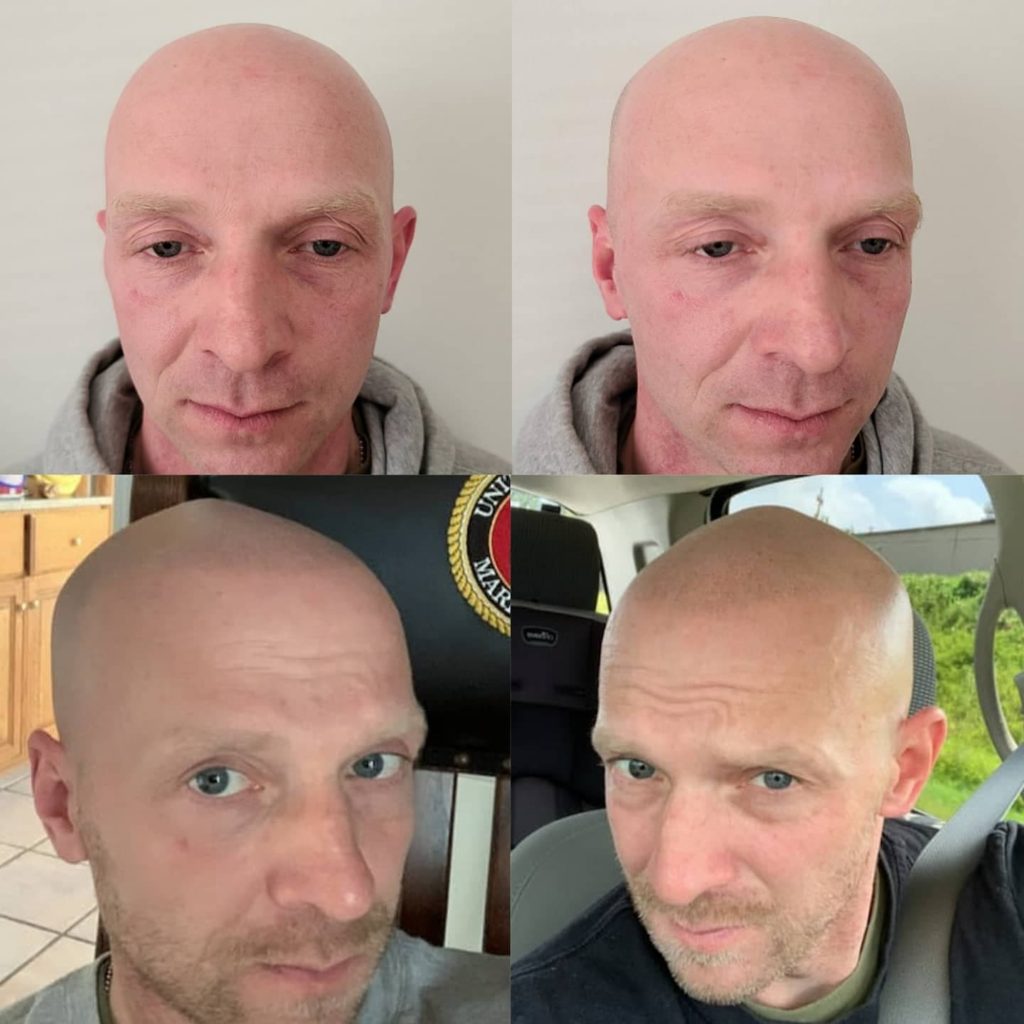
See more details about Scalp Micropigmentation in Houston here or Scalp Micropigmentation Austin here
If you have absolutely any questions – feel free to get in touch. Even if you do not choose me for your treatment, I am happy to advise anybody on their journey to SMP! All the best, Ian Dennis, Houston, Texas – October 2018.

